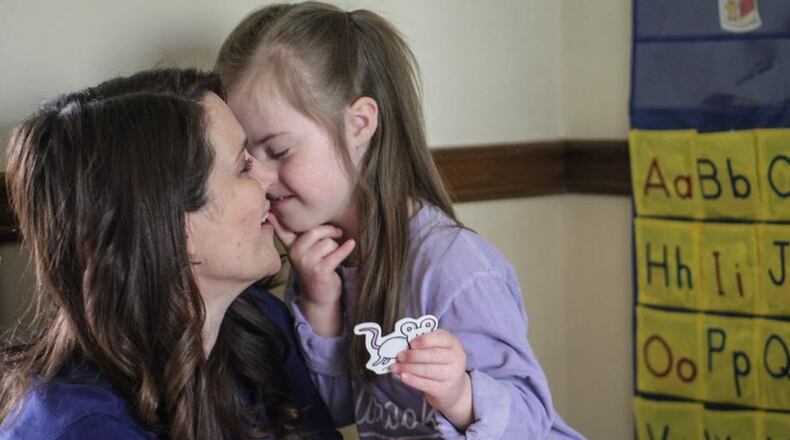Those challenges were extended last week when Gov. Mike DeWine ordered that all Ohio schools would finish their academic years remotely. Federal and state officials are advising schools and parents to make “a good-faith effort” toward serving students with disabilities during coronavirus-forced school closures rather than obsessing about normal legal rules that might be impossible to meet at the moment.
About 237,000 students in Ohio’s public school districts — about 15 percent — have been identified as having a disability, according to state data.
About 14 percent of Fairfield Schools’ 10,000 students in Butler County are considered special needs learners.
“The primary challenge of remote learning is keeping all students engaged,” said Kathy Gilbert, director of special services for Fairfield Schools.
Experts say special education is decidedly not a one-size-fits-all issue, ranging from students who have basic academic learning disabilities to students with physical and behavioral disorders to multiple-disabled students with major medical issues.
“Some of our students have intense special education needs that make remote learning even more difficult (and) it requires parents to be even more engaged,” said Gilbert.
Parents are doing the best they can with new responsibilities, they said.
“Olivia has Down syndrome,” said Bellbrook Schools parent Jenny Lake about her daughter who attends the Greene County school system.
“She works with six teachers — a typical classroom teacher, an intervention specialist, a speech/language pathologist, an occupational therapist, a physical therapist and an adaptive PE teacher. …. So I’ve just recently become all six of those people.”
That’s one of the few upsides of having to rely solely on remote learning for special needs students, said Gilbert.
“It requires parents to be even more engaged and the advantage has been that more parents are involved in their child’s education,” said Gilbert.
Andrea Longworth, executive director of special services at Lakota Schools, agreed.
“Remote learning has promoted authentic communication between parents and service providers, and has given service providers opportunities to provide immediate feedback to parents and guardians that can be carried over into the home setting,” she said.
But the list of advantages is a short one compared to the new obstacles of teaching students with learning and physical challenges from afar, rather than being with them in a classroom.
“The loss of socialization opportunities with students and their peers has been difficult, as well,” said Longworth, who oversees the instructional programs and special education teachers serving the 10 percent of students – among Lakota’s 16,800 – who have special needs.
And with some families, there are technological challenges if a student’s family lacks internet access and paper assignments must be delivered or picked up for children.
Lakota has been one of the more aggressive districts in southwest Ohio in providing computer laptops to almost all of its students in the last two years and the availability of the digital learning tool has eased that problem somewhat, said Longworth.
“Lakota was fortunate to be in a position where we already had the capacity to transition to remote learning,” she said.
Fairfield Schools are planning on greatly expanding their laptop availability to students next school year and the difficulty in teaching some special needs students – especially those in lower income families – is a concern district officials are working on fixing.
“Some of our students do not have enough technology or wi-fi to truly engage at the level that the district would like to see. We are working with families to accommodate their needs as best as possible,” said Gilbert.
Many school officials call for more state or federal financial or other assistance to help bridge the technology gap hindering some families.
“If state or federal officials could provide more funding for technology and wi-fi access it would be beneficial for remote learning,” said Gilbert.
Attorney Robyn Traywick of Advocates for Basic Legal Equality represents families in special education disputes. The wide variety of cases leads to inconsistencies, she said.
A teenager with a learning disability might be able to participate in an online group lesson but an active 5-year-old with autism might be less likely to focus on a computer-based lesson of much duration.
Educators also acknowledged struggles.
Miamisburg Schools Director of Student Services Katy Lucas said services “are going as well as can be expected,” but inherent hurdles exist.
“Most services that are provided in an individual education plan would be difficult to provide through a distance-learning format,” Lucas said. “Services by their very nature require real-time interaction between the professional and the student so that feedback and correction can occur at the exact moment it is needed.”
Traywick said the reality of the situation is, “there are kids who are going to be set way back by this.”

